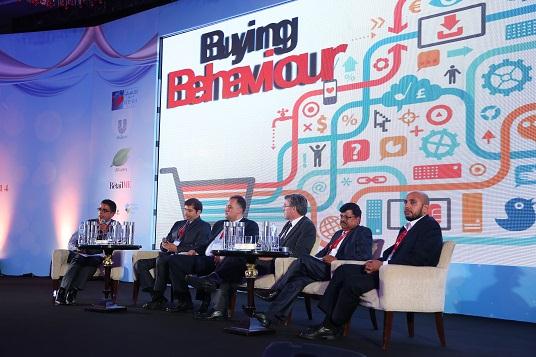
Harmonising the physical and digital presence to keep customers engaged was the theme of a discussion at Middle East Retail Forum (MRF) moderated by Prakash Menon, executive director, Thought Leaders Middle East, the message being that forward-thinking brick-and-mortar players must recognise the inevitable rise of online shopping and adapt to the new reality. Panellists included Hari Kesavan, CTO, ISYX; Steve Odak, CEO, imarketVend; Hozefa Saylawala, regional sales director, Zebra Technologies; Maher Elissaoui, director- EMEA, CitiXsys – iVend Retail; Keith Lilley, retail architect and project manager, SAP MENA.
Online is no longer a choice but a necessity. The future of retail is linked to the growth of interdependent touch-points rather than independent silos, with offline and online channels complementing each other. Retailers will have to integrate and harmonise their physical and digital presence to keep customers engaged while enabling access to a wider audience.
The key to an omni-channel retail strategy is to offer the right combination of helpful product information, product availability, and a good price for the shopper who is ready to buy. When extended to brick-and-mortar stores, the strategy demands knowledgeable store associates who can help the shopper find the right products, while in e-commerce it demands a range of product selection tools such as product reviews, product comparisons, plus up-selling and cross-selling recommendations to boost total sales.
“By definition, omni-channel means being omni-present. It means the retailer needs to be available to customers both physically and virtually, anytime and anywhere. In traditional retailing, customers reached out to retailers after perusing ads in newspapers or magazines. In this digital age, retailers need to reach out to customers, which requires them to know where their customers shop, their store experiences and shopping habits, what they think about brands and what they share with their friends. Traditional retailers find it a lot more demanding than modern retailers to implement e-commerce and omni-channel systems, given their legacy systems and processes,” explains Hari Kesavan, CTO, ISYX.
It’s such process failures that are responsible for 94% of business failures, feels Prakash Menon, executive director, Thought Leaders Middle East. He warns that retailers who fail to reinvent themselves will disappear, pointing out that true business transformation happens because of people, so it’s all about education.
Talk of ‘reinvent or disappear’ reminded Steve Odak, CEO, imarketVend, of Circuit City, a hugely successful American electronics retailer that does not exist today because it failed to reinvent itself and keep up with its customers when their expectations changed in a changing retail landscape. “Retailers don’t need to look beyond their own stores to understand today’s customer behaviour, especially the growing trend of showrooming, which is a missed opportunity for them to engage with such customers. It’s to avoid such missed opportunities and reach closer to their customers that brick-and-mortar retailers are getting into e-commerce, while online giants such as Amazon are entering the brick-and-mortar space with pop-up stores and kiosks,” he observes.
Retailers need to constantly ask themselves what their customer are thinking, and whether they have what their customers are seeking, reiterates Hozefa Saylawala, regional sales director, Zebra Technologies. “It’s even more important to understand where a customer’s thought process begins when deciding to invest in a product or brand. How can retailers capture this moment, which no longer begins in the store? The future of understanding customer behaviour lies in predictive analytics, which is predicting the buying behaviour of customers on the basis of their purchasing power, before they’ve made a purchasing decision,” he explains.
After all, the customer is king, so it’s the business of retail to position itself as the leading authority in the customer behaviour space by following the customer, asserts Maher Elissaoui, director- EMEA, CitiXsys – iVend Retail. “Retailers must have dedicated resources to understand their customers and analyse data on their behaviours if they are to improve customer experiences by reaching out to them at the right place and the right time,” he elaborates.
Keith Lilley, retail architect and project manager, SAP MENA, points out that a retailer must maintain functional trust in each channel. “A major issue retailers face is deciding which channel to serve first. Here’s where the supply chain is critical, because it’s all about delivering a promise to the customer, and if retailers fail to honour that promise, it’s just a matter of time before that channel (or channels) becomes irrelevant,” he says.
“Retailers who want to be present anywhere and anytime for their customers must realise it’s not enough to launch a website and activate a payment gateway to facilitate transactions. Today’s customers often know more about products than in-store sales staff. So retailers must learn to manage their digital assets in a way that allows their customers to find whatever they want, when they want – while also permitting them to communicate in real time with these customers through multiple channels. The impact of omni-channel retailing will be seen as and when such processes consolidate and are used more widely. Omni-channel enables retailers to push their imagination, because it’s limitless in terms of the inventory it can carry and the borders it wishes to cross,” concludes Kesavan.
Notifications
You must be logged in to post a comment.